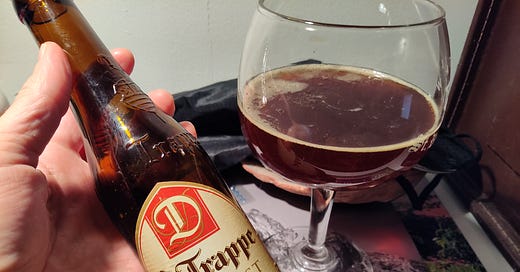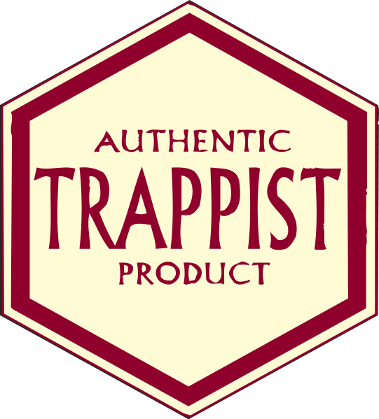It’s Sober January again so instead of drinking beer I will write about the most recent one I drank. Yearningly. Anticipating February when, like Dylan Thomas I will once again enjoy:
its live, white lather, its brass-bright depths, the sudden world through the wet-brown walls of the glass, the tilted rush to the lips and the slow swallowing down to the lapping belly, the salt on the tongue, the foam at the corners.
La Trappe Dubbel, which I found at a mostly-Polish grocery store, is a Dutch Trappist. A beer style that is like the Chianti of the Low Countries, a fastidiously pedigreed beverage with a hexagon on the label that says “authentic Trappist product.” There are only eleven such products in the world, and only one other from the Netherlands. Orval, Westmalle and Chimay are old faves of mine from the Belgian side of the border, but this is La Trappe from the Dutch village of Berkel-Enschot, just outside Tilburg.
It’s tantalizing to imagine taciturn men with tonsure hairstyles half-smiling at one another while stirring wort with a huge paddle, but it seems like the main criterion for membership in the club of eleven is Christian-ish business practices. Community-oriented commerce and so on. I don’t think it’s really monks who still do the brewing. This is after all one of the least religious places in the world. No religious doctrine undergirds production of Trappist ale. Still, the beer’s website invites us to “taste the silence,” a hilarious marketing phrase that fetishizes the drunk-monk tradition.
The beer hits the inside of my wide glass goblet and kicks up a noisy head of foam that quickly dissipates and doesn’t leave much lace on the glass. An aroma of warm caramel but still that sharp cheese-funk that reminds us that we are in the domain of wild yeast. The body is robust but it slides down smoothly for a sevenpercenter. I was ready for a second sip rather quickly, considering the murky, Smurf-y forest mushroom that hits the tongue first.
I would pair it with a dense cheese and a rough bread because of the pleasantly sticky effect that lingers in your nose and throat. The unfermented sugar, perhaps more than I would like, recalls honey and dried fruits and even cola. A liturgical beer, it encourages one to head out for a contemplative walk on the edge of a wet forest before returning to the rectory for a second bottle.





